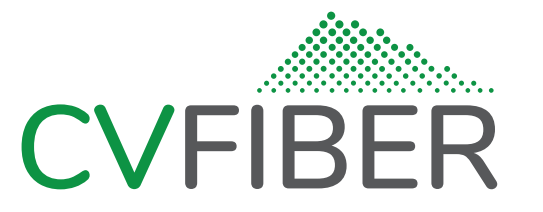The big news this month is that CVFiber is about to take the first real-world, physical step toward building a fiber network. But there’s lots more going on as well. The pace of activity is accelerating.
This month’s update includes:
- On July 28, CVFiber will hold a webinar describing its plan to deliver broadband throughout its service area
- An overview of CVFiber’s buildout plan
- That first tangible step: Pole inventory to begin in Area A
- CVFiber is seeking proposals for a system operator
- CVFiber is negotiating with a contractor for a high-level system design
- CVFiber is seeking more grants
- Member communities are being asked to consider contributing portion of Federal ARPA funds for broadband infrastructure
And now, the details.
July 28 CVFiber Network Plans Webinar
On Wednesday, July 28 at 7:00 p.m., CVFiber founder and chair Jeremy Hansen will host a webinar on our plan to deliver high-speed Internet service to every address. The presentation will cover CVFiber’s background, the CVFiber Community Network plan and costs, as well as funding of the $50 million project. The webinar will be accessible by GoToMeeting or by phone.
The GoToMeeting link:
https://www.gotomeet.me/CVFiber/summer2021
For phone access:
1 (872) 240-3212 and enter code 554-781-029.
The Construction Plan
CVFiber’s first priority is to make 100/100 Mbps service available to the 6,100 underserved within the district. If you don’t have service, or your service is less than 25/3 Mbps, that means you.
The goal is to make service available to 50% of the underserved in 2022, 80% in 2023, and 95% in 2024.
Plans call for construction and making service available to more than 3,800 underserved in twelve communities in 2022, a project consisting of installing more than 300 miles of fiber. In 2023 another 300 miles of fiber will be installed and service offered to another 2,000+ underserved in five communities; in 2024, the numbers will be 300 miles of fiber and service to nearly 1,000 underserved.
These plans depend on the availability of funds, materials and contractors in a tight labor market.
First Steps
CVFiber is about to take the first physical steps toward building its fiber network. Very soon, crews from consulting companies Apex, Eustis, and Tilson will begin conducting a pole inventory — collecting more than 50 different kinds of information about every utility pole. You will see the CVFiber logo displayed on their work vehicles. Precise information about every pole is necessary in order to design, make-ready, and build our fiber network.
Initially, the inventory will take place in Area A: Moretown, Middlesex, Worcester, Calais, and East Montpelier. These are the five communities with the most unserved or underserved, or help us better reach those underserved while creating a viable network. Inventory work in twelve other communities will follow later in 2021.
High-level and detailed designs are also planned for these seventeen heavily underserved communities in 2021.
Seeking a Service Operator
On July 21, CVFiber issued an RFP (request for proposals) from firms that could develop and operate our fiber network. The chosen firm or team would manage construction, operate the network, provide for Internet service, and manage the business. Proposals are due by August 20.
The firm or team would work under the direction of the CVFiber Governing Board, which consists of one delegate appointed by every member community.
High-level Design
The design of our network will happen in two phases. We have solicited proposals for a high-level design contractor, and are currently in negotiations. The chosen contractor will also perform the detailed design and develop the construction plans.
Seeking Grants from the State of Vermont
CVFiber has already received nearly $1 million in grants from the state of Vermont to pay for feasibility studies, a business plan, pole inventory in Area A, and high-level design work. We will be applying for additional grant funds to pay for the rest of the pole inventory, plus associated project management and legal services.
We will continue to apply for further grants as needed. The state has appropriated $150 million for broadband; we expect to receive about $20 million over several years, which represents roughly 40% of total construction cost.
The money comes from the federal government through the American Rescue Plan Act (ARPA), and will be distributed through the just created Vermont Community Broadband Board.
These ARPA grant funds enable CVFiber to accelerate the development of the CVFiber Community Network and keep subscription rates as low as possible.
Seeking Support from Member Communities
CVFiber is a nonprofit municipality that by law has no taxing authority, nor access to community taxes. It is totally dependent on grants, subscription revenues, and debt.
Each of our member communities is also receiving federal ARPA grant funds to address the impact of the pandemic and meet infrastructure needs, including broadband.
CVFiber will be asking to meet with the Select Boards in each community to discuss a possible contribution of a portion their ARPA grant funds for broadband infrastructure. Initial responses for a contribution has been encouraging.
The earlier the grant funding, the faster the development and the lower the subscription rate.
